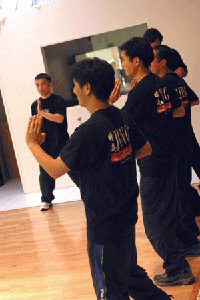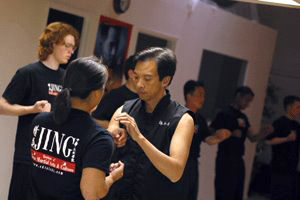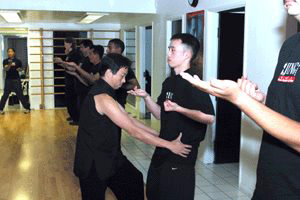Wing Chun Forms
This system is made up of three empty hand forms, a wooden dummy form, and two weapons forms. They are, namely,
* Sil Lim Tau (“Little Ideal’ hand form)
* Chum Kiu (“Seeking the Bridge” hand form)
* Biu Jee (“Thrusting Fingers” hand form)
* Mook Yan Jong (Wooden Dummy Form)
* Luk Deem Boon Kwun (6 1/2-point staff” weapon form)
* Bak Jarm Dou (“8-slashes knives” weapon form)
The “Sil Lim Tau” hand form develops correct body structure and hand techniques.
The “Chum Kiu” hand form develops the correct stances and footwork, as well as proper application of hand techniques.
The “Biu Jee” hand form contains advanced techniques to be used in emergency situations.
The “Wooden Dummy” techniques develop the correct footwork, body position, and power delivery while applying techniques from the 3 hand forms.
The two weapon forms develop power in the deliverance of strikes as well as the usage of the weapons themselves.
Wing Chun is a southern Chinese kung f u system with roots leading back to the Shaolin Temple. It is a style that emphasizes “close-range” fighting techniques. “Softness” is a key to using Wing Chun techniques, and training focuses on the Center Line Theory, the Neutral Point Theory, Sensitivity training, as well as footwork. Wing Chun stylists also practice tranquility and humility as a way of life. The system is ideal for small-sized people (especially women) as it places an emphasis on “using opponents’ power against themselves” rather than physical force.

Wing Chun Forms

Wing Chun Forms
